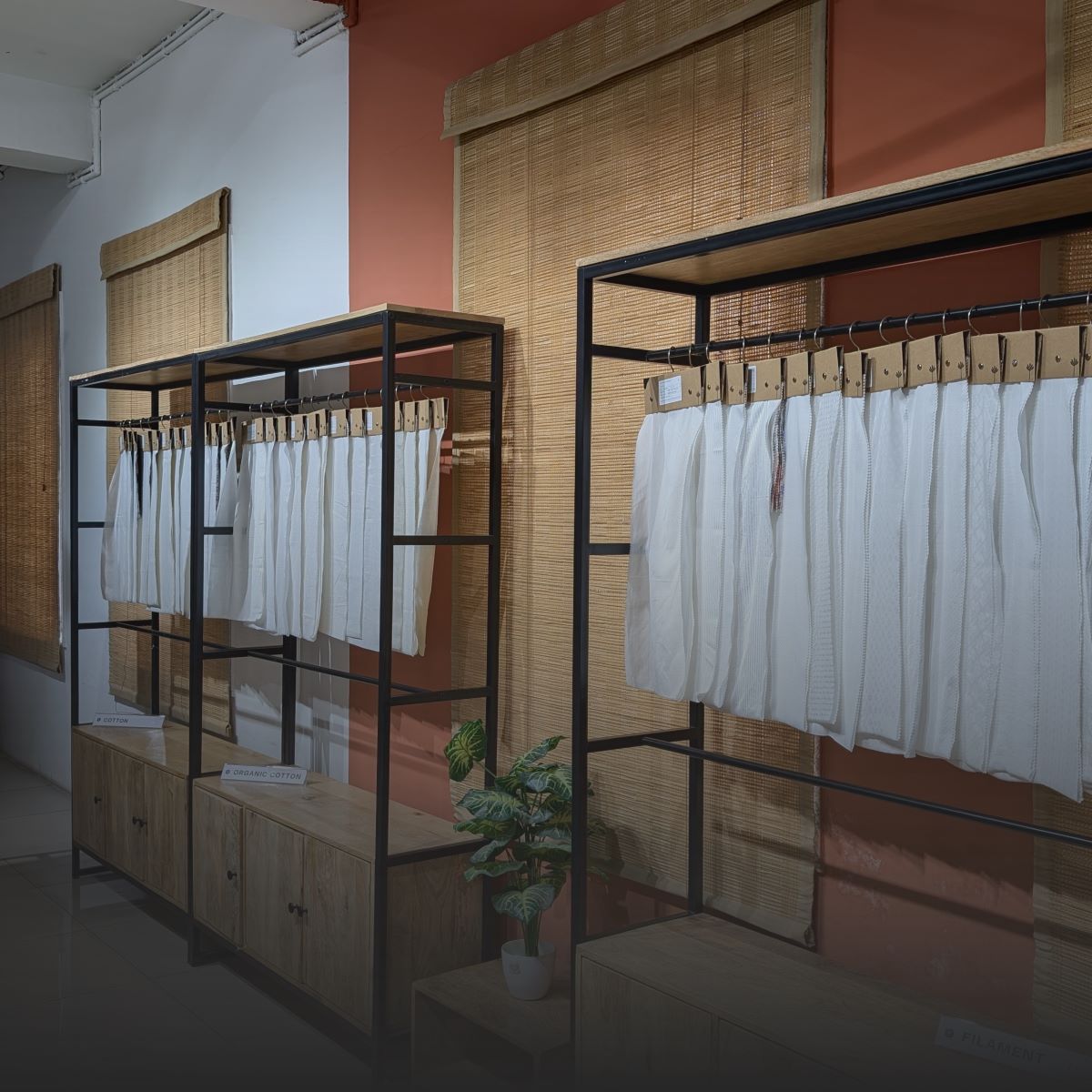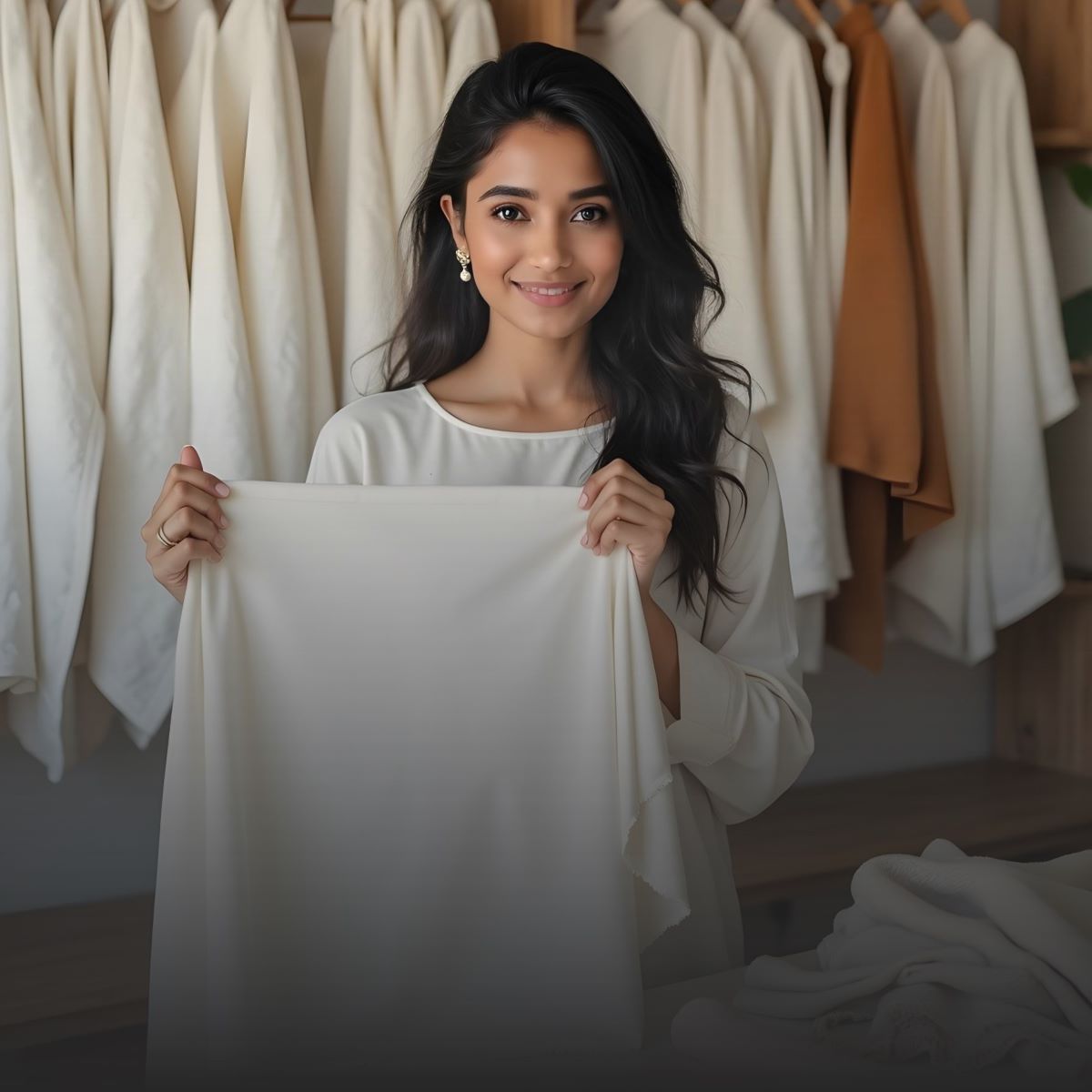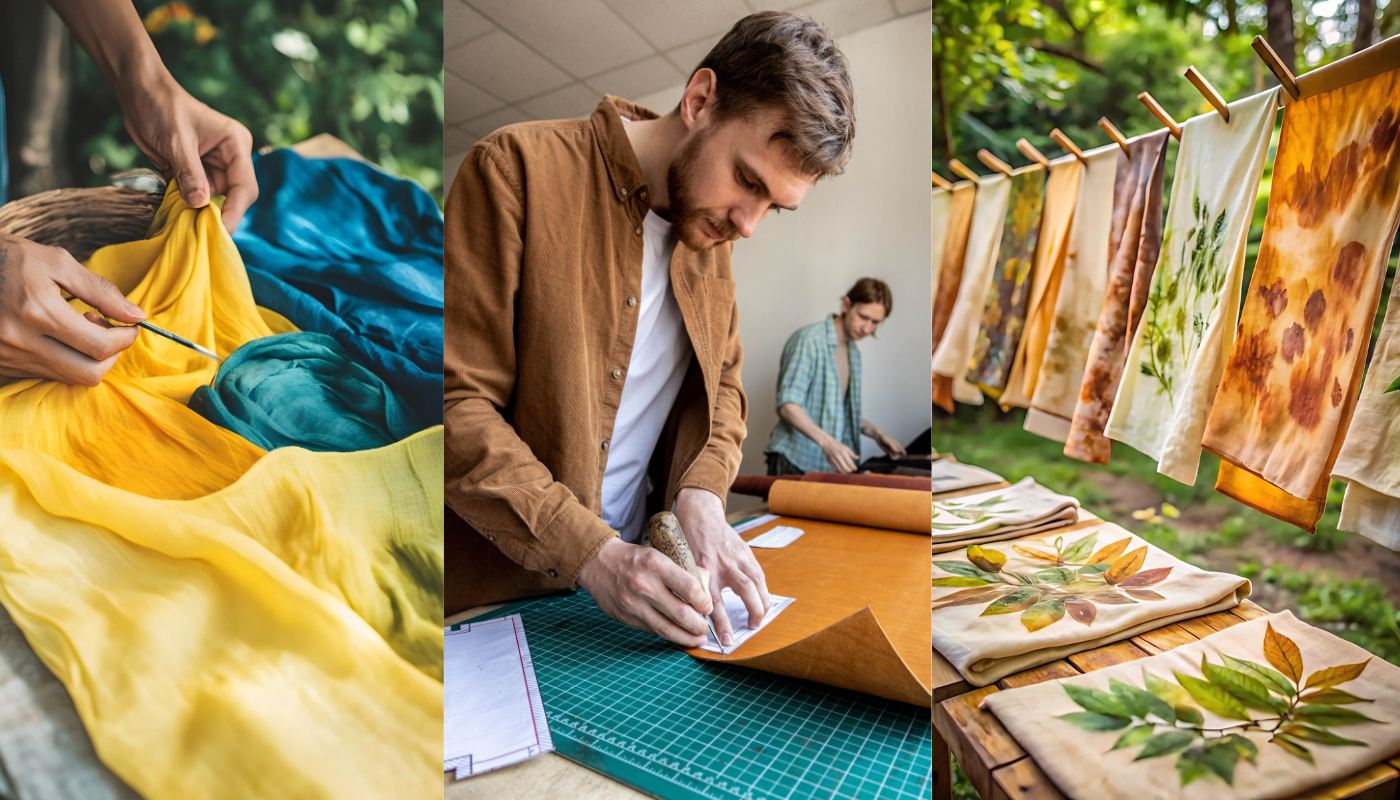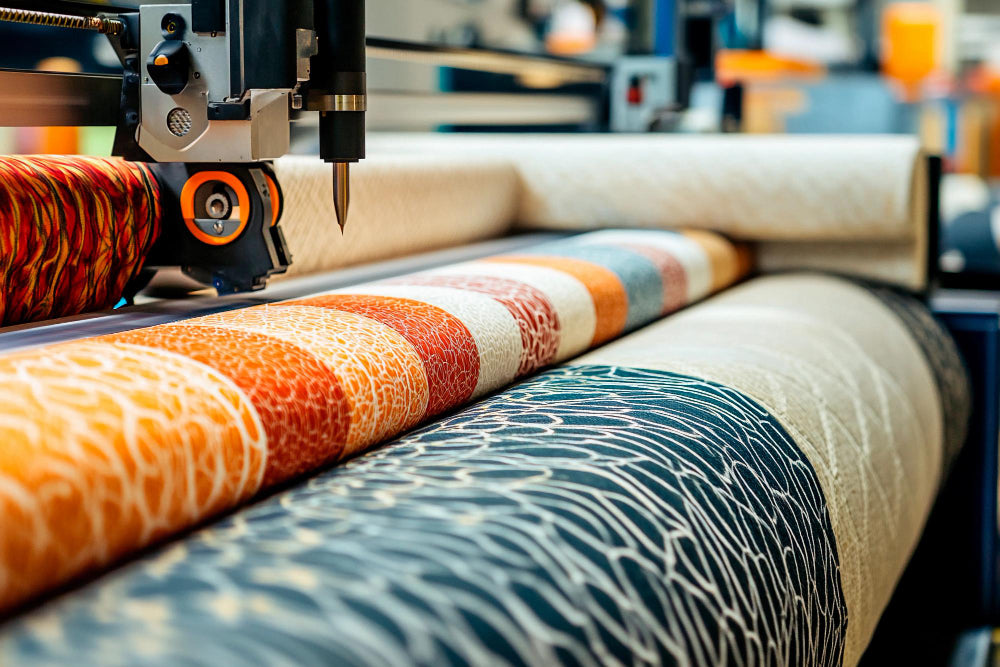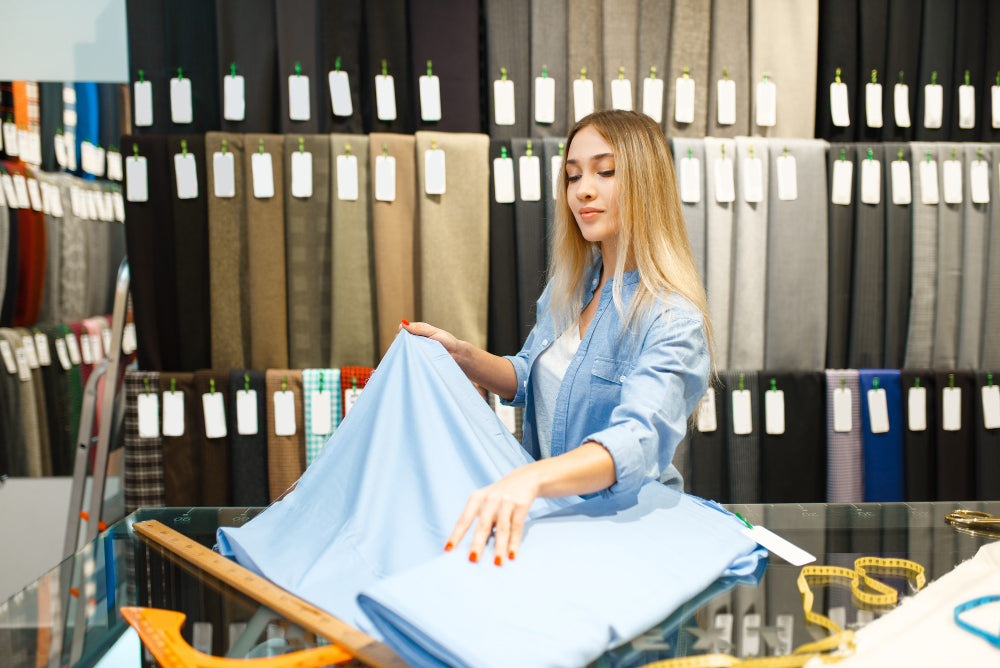In today's fashion-forward landscape, sustainability and precision are no longer options; they are required. Environmentally concerned brands, particularly in Eastern Europe, where the textile industry is rapidly expanding, require excellence at all stages. At the heart of that perfection are two critical processes: fabric dyeing and quality inspection. These processes affect not only the final appearance of a garment but also its durability, environmental footprint, and market value.
Mastering these processes is critical for both fabric suppliers and fashion brands to source responsibly and remain competitive in today's discerning consumer market. So, let's look at how fabric dyeing and quality inspection are done and why it's so crucial to assure perfection in Eastern European textiles.
Also Read : Top Indian Fabric Suppliers for Sustainable Fashion Brands
Sustainable Fabric Dyeing: Eastern Europe's Eco-Driven Textile Shift

Understanding how to dye clothes isn't just about colour; it's also about ethics and how things look. Dyeing has long-lasting effects on the environment, the quality of the product, and the business's reputation. Every part of the dying process is vital for making colourful clothes that last a long time and are made decently. Learn how to dye fabric:
What Is Fabric Dyeing?
Fabric dyeing is adding colour to textiles (fibres, yarns, or fabrics) using natural or artificial dyes. This method affects texture, performance, and environmental impact in addition to visual appeal. It breathes new life into a garment correctly while promoting sustainability.
Key Stages In The Dyeing Process
1. Pre-treatment
- It involves scrubbing and bleaching to get rid of dirt and wax.
- It keeps the dye from clumping and improves colour stability.
2. Dye Selection
Based on the type of fabric:
- Reactive dyes for cotton
- Acid dyes for wool/silk
- Plant-based and low-impact dyes are two sustainable options.
3. Dye Application Techniques
- Piece dyeing: dying the cloth after it has been woven; this method works best for solid-coloured fabrics.
- Dyeing Yarn: Yarn is dyed before it is woven, and checkerboard or striped patterns are made.
- Fibre Dyeing: When you dye fibres before you spin them, you often get a mix of colours.
- Garment dying: Dying whole clothes, often done in a slow, small-batch way.
4. Fixation & Finishing
- Heat or chemical treatment to lock colour.
- Final washes to ensure softness and hand feel.
Eco-Friendly Dyeing Techniques Making A Difference
Brands that are on the cutting edge are engaging in environmentally friendly dyeing innovations, such as:
- Using natural dyes: Using colours from plants, like turmeric, indigo, and madder, and giving people biodegradable choices.
- To print digitally: Uses less water and chemicals so that plans can be accurate and good for the environment.
- Dying with dope: Adds colour during fibre production, significantly reducing the water needed.
Textile Exchange says that over 60% of global fashion brands now use low-impact dyeing methods as part of their pledges to be environmentally friendly.
Why Eastern Europe Is Emerging As A Quality-Driven Hub
By updating their dying units with closed-loop water systems that recycle and reduce water waste, Eastern European brands are making significant steps towards more environmentally friendly cloth production. They are also switching to biodegradable and certified dyes, which will less affect the environment and make the finished goods safer.
These brands also use precision-driven technologies like digital and pigment printing, which makes designs stand out while saving water, energy, and raw materials. This shows that they are making an effort to make their products eco-friendly. Eastern Europe is becoming more popular because:
- Proximity to Western Europe.
- Compliance with EU sustainability regulations.
- Skilled labour and advanced facilities.
Wholesale fabric Supplier in Eastern Europe, and companies are getting closer to traditional Asian sellers by putting money into
- High-efficiency dyeing systems.
- On-site quality testing labs.
- Transparent production models.
Brands like Reformation and Stella McCartney use Colorifix and other biotech-based ways to dye clothes. Designers in Eastern Europe, like De IONESCU and Deta, also use similar methods, raising the standards for regional sources.
Fabric Quality Inspection: Ensuring Consistency, Performance & Trust

Before it is used in production, fabric quality checking is a very important step that makes sure every roll of fabric meets the highest standards. Let's talk about why inspecting fabrics is important and what key factors pros look at to make sure they work well, last a long time, and look good.
What Is Fabric Quality Inspection?
Before going into production, dyed fabrics must meet the visual, tactile, and structural standards set by quality inspection. This process cuts down on defects, returns, and product inconsistencies, which is important for fashion brands that want to grow while keeping their brand value.
Common Inspection Parameters
- Durability of Colour: Checks how well it stands up to water, rubbing, light, and sweat.
- GSM (How many grams are in a square metre?): Checks to see if the fabric is the right weight and will last a long time.
- Consistency in Weave or Knit: Finds flaws in the weave or broken yarns.
- Faults: Lack of colour, spots, lines, holes, or prints that aren't lined up right.
- Loss of Size and Recovery: Checks how well the fabric works after it has been washed or stretched.
The 4-Point Inspection System
Most textile companies use the 4-Point System, a quality control measure used worldwide to find flaws in fabric. This method gives each defect a score between 1 and 4 based on how big and bad it is.
Usually, fabric rolls are fine if they have fewer than 40 points per 100 yards.
Here's how to score flaws:
1. Point: For a minor flaw that is less than three inches long.
2. Points: An average flaw is three to six inches long.
3. Points: Big flaw, about 6 to 9 inches
4. Points: Major flaw, more than 9 inches
This standard inspection method ensures that the fabric's quality is always the same, which helps brands and makers keep trust and dependability in their supply chain.
Common Defects In Fabric Inspection (Industry Average)
Here is a list of the most common problems found during inspections:
- Weaving Defects (30%) – Broken or missing yarns.
- Stains (25%) – Often due to machine oil or dirty environments.
- Holes (20%) – Mechanical damage or fibre weakness.
- Colour Variation (15%) – Inconsistent dye penetration.
-
Misprints (10%) – Poor printing alignment or machine error.
Technology Transforming Fabric Dyeing & Inspection
The way textiles are made is changing quickly thanks to Industry 4.0:
- AI-powered inspection: Detect micro-defects that human inspectors miss.
- Automated dyeing machines: let you precisely control the amount of dye and heat so that you spend as little as possible.
- Blockchain: Allows tracking from the dye house to the store, which increases supply chain openness.
Examples of Brands:
- Zara: Uses AI-powered research and inspections to ensure that all of its stores worldwide are the same.
- Patagonia: Do advanced tests for safety and reliability, often going above and beyond what is required.
Fabriclore's Certified Dyed Fabrics Online: Trusted Quality For Eastern European Wholesale Buyers

Fabriclore does more than sell fabric; we also engineer excellence into every layer. As a trusted fabric sourcing partner for fashion startups and established brands in Eastern Europe, we are redefining textile excellence through precise dyeing and stringent quality control processes. Every product is designed with sustainability, performance, and visual appeal, from mauve dyed cotton to linen mill-dyed fabrics.
Our modern infrastructure covers everything from Pantone shade-matched custom dyeing to in-house 4-point inspection systems, ensuring that each cloth roll satisfies international standards. Whether you want to buy fabric online at wholesale prices or choose dyed cotton and linen for your collection, Fabriclore will offer speed, accuracy, and verified quality.
Custom Dyeing Services Tailored To Your Brand
We provide a wide range of commercial and custom dyeing services, such as
- RFD (Ready for Dyeing) Base Fabrics: Pre-treated materials ideal for uniform dye application.
- Yarn-Dyed and Mill-Dyed Options: Suitable for woven patterns and bulk colour consistency.
- Custom Pantone Shade Matching: Achieve exact brand colours with precision.
- Low-Impact Dyeing Techniques: Including natural dyes, dope dyeing, and water-saving processes on request.
Flexible Printing Capabilities
Our printing unit offers a range of methods to meet the needs of different design projects:
- Digital Printing: High-resolution prints with minimal water usage.
- Reactive Printing: For deep, durable penetration in cellulose fabrics like cotton.
- Pigment Printing: Surface prints are ideal for detailed and vibrant patterns.
In-House Quality Assurance Lab
Equipped with advanced fabric testing machines, we conduct:
- 4-Point Fabric Inspection System: Identifying and scoring defects by severity.
- GSM & GLM Measurement: Automated testing for weight and length consistency.
- Colour Fastness Testing: Against washing, light, and rubbing (per ISO standards).
- Shrinkage, Pilling & Stretch Recovery Tests: Ensuring durability and fabric performance.
- Post-Packaging Quality Check: Before dispatch, every order is re-verified for defects or inconsistencies.
We use tools like:
- GSM Cutter and Digital Balance.
- Crockmeter for rub fastness.
- Shrinkage Template and Wash Machine.
- Pilling Tester.
- Tensile & Tear Strength Tester.
Certifications & Compliance
On request, we provide fabric certifications to support your brand's compliance goals:
- GOTS (Global Organic Textile Standard).
- OEKO-TEX Standard 100.
- ISO and REACH Reports.
These documents ensure ethical sourcing, eco-safety, and transparency across your supply chain.
Fast Turnarounds & Global Fulfillment
- 10–15 Days Dyeing & Quality Check Timeline.
- Doorstep Delivery across Europe, North America, and Asia.
- Express services available for urgent production schedules.
12,000+ Fabrics at Low MOQ
Access an extensive library of various resources , including:
- Organic Cotton, Hemp, Bamboo, Linen, and Eco-friendly blends.
-
MOQ starting at just 1 meter, ideal for sampling or small-batch production.
Serving Western Europe & Beyond
Fabriclore is actively expanding fabric sourcing solutions across:
Western & Eastern Europe:
- Armenia, Azerbaijan, Cyprus, Slovakia, Moldova.
- Bosnia & Herzegovina, Kosovo, Kazakhstan.
Caribbean & Latin America:
- Trinidad & Tobago, Colombia, Bogota
Africa:
- Kenya—our newest sourcing hub
Whether you're a boutique in Cyprus or a production house in Kenya, Fabriclore bridges the gap between innovation and textile accessibility—with transparent pricing, responsive service, and consistent quality.
Also Read : How To Access Custom Fabric Design And Sampling Services In Eastern Europe
Conclusion: Redefining Textile Excellence With Fabriclore In Eastern Europe

As Eastern Europe becomes a centre for ethical sourcing, sustainable fabric dying and quality checks have become essential signs of a brand's honesty, and not just for back-end tasks. Fabriclore has more than textiles for fashion designers and brands that want to balance style and do the right thing. We offer eco-friendly fabrics like dyed cotton, linen mill-dyed fabrics, and custom-printed materials—certifications, consistent quality, and shipping support around the world back all of these.
Smarter sourcing. Cleaner methods. Trusted results.
Ready to elevate your textile supply chain?
Buy fabric online at wholesale prices or consult our textile experts to experience the Fabriclore difference in Eastern Europe and beyond.
Also Read : Digital vs Screen Printing: Choosing The Best Fabric Printing Method For Your Eastern European Brand
FAQ’s
1. What Are The Most Sustainable Fabric Dyeing Methods Used In Eastern Europe Today?
Ans: Sustainable cloth dyeing is quickly changing in Eastern Europe to use less water, make less chemical waste, and use less energy. Some leading methods are:
- Natural dyeing: using plant-based sources like madder, turmeric, and indigo, which makes it perfect for making small amounts by hand.
- Digital textile printing is very accurate and uses 60–80% less water than traditional dying, making it a favourite among slow fashion brands.
- Dope dyeing: where colours are added while the fibres are being extruded, saving water and ensuring the colour stays the same over time.
- Closed-loop dyeing systems: In line with EU rules for green manufacturing, many companies now use closed-loop dyeing methods that recycle and reuse water.
Eastern Europe is a leader in eco-friendly cloth processing because it combines new ideas with old ways of doing things.
2. Why Is Fabric Quality Inspection Important For Fashion Brands?
Ans: For fashion brands to keep their products consistent, cut down on returns, and meet customer standards, they need to check the quality of the fabrics they use. Some important perks are:
- Detecting manufacturing defects (like mistakes in the weaving, stains, or differences in colour) before the production process starts.
- Ensuring the technical specs for GSM, shrinkage, and stretch properties are met is very important for clothes that must work in a certain way.
- To keep a brand's image over time, colour fastness and durability tests must be made possible.
- International safety and textile standards (like OEKO-TEX and GOTS) must be met.
In places like Eastern Europe, this is especially important for brands that want to sell their goods in Western Europe, where failing to do so during inspection can cause shipments to be rejected or damage the brand's image.
3. What Is The 4-Point Fabric Inspection System, And How Does It Work?
Ans: The 4-point inspection system is the standard way to check the quality of textiles worldwide. Every linear yard or metre of cloth is scanned, and flaws that can be seen are given a grade from 1 to 4 points based on how bad they are:
- 1 Point: Minor flaws under 3 inches (e.g., small spots or snags).
- 2 Points: Flaws 3–6 inches long.
- 3 Points: Defects 6–9 inches long.
- 4 Points: Serious defects over 9 inches.
There shouldn't be more than 40 points per 100 square yards. This method ensures that all bulk orders are the same and helps brands keep their high standards of quality across foreign markets.
4. How Can I Find A Fabric Supplier In Eastern Europe That Offers Both Dyeing And Inspection Services?
Ans: Local textile hubs like Poland, Romania, and the Czech Republic have mills that can do the job, but platforms like Fabriclore have a strategic advantage:
- Global sourcing from India's rich textile ecosystem.
- Custom dyeing, digital printing, and Pantone shade matching.
- In-house 4-point inspection systems and ISO-compliant testing labs.
- Low MOQ (starting at 1 meter), making it ideal for small brands.
- Fast, reliable shipping to Eastern Europe within 10–15 working days.
So, whether you live in Bucharest, Riga, or Bratislava, you can use a single online site to buy certified, pre-inspected fabrics dyed eco-friendly.
5. What Certifications Should I Look For When Sourcing Eco-Friendly Dyed Fabric In Europe?
Ans: When looking for dyed or sustainable fabrics, the following certifications make sure they are safe for the earth and made ethically:
- GOTS (Global Organic Textile Standard): Verifies that organic fibres and dyes were used under environmentally and socially responsible conditions.
- OEKO-TEX Standard 100: Ensures that textiles are free from harmful chemicals and safe for human use.
- GRS (Global Recycled Standard): Confirms the use of recycled materials and validates ethical processing.
- REACH Compliance: EU regulations mandate that chemicals used in dyeing are safe for both people and the planet.
Fabriclore has a lot of approved fabric bases and can provide proof upon request, which makes it easy for eco-friendly fashion brands in Europe to follow the rules.
We also happen to be a magnet for suggestions, and would love to catch yours….throw us yours on hello@fabriclore.com
